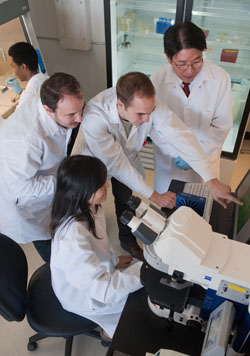6 A&S Physicists Awarded Breakthrough Prize
Our universe is dominated by matter and contains hardly any antimatter, a notion which still perplexes top scientists researching at CERN’s Large Hadron Collider. The Big Bang created equal amounts of matter and antimatter, but now nearly everything—solid, liquid, gas or plasma—is…


 Persister cells, similar to spores, are a small portion of a microbial population that is dormant. Inherent in bacterial populations, it is believed that they play important roles in chronic infections like tuberculosis, persistent fungal infections and lung infections in cystic fibrosis patients. The dormant properties of these persister cells make them tolerant to almost all antibiotics. Therefore, infections can reoccur once a person stops antibiotic treatment since the bacteria can regrow from the persister cells and attack again.
Persister cells, similar to spores, are a small portion of a microbial population that is dormant. Inherent in bacterial populations, it is believed that they play important roles in chronic infections like tuberculosis, persistent fungal infections and lung infections in cystic fibrosis patients. The dormant properties of these persister cells make them tolerant to almost all antibiotics. Therefore, infections can reoccur once a person stops antibiotic treatment since the bacteria can regrow from the persister cells and attack again.